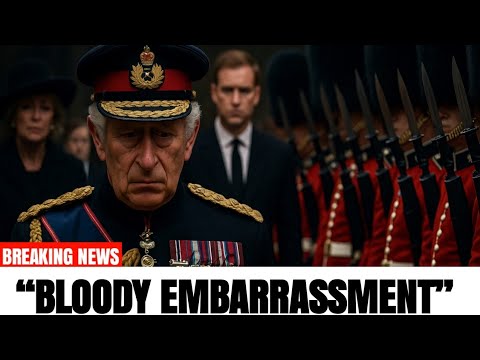DISASTER BEFORE TROOPING! King Charles FORCED To Do The Unthinkable

Just hours before trooping the color, King Charles bans Prince Harry from the royal stage. And the reason will leave you speechless. In an unprecedented royal crackdown, King Charles has issued a shocking last-minute order, barring Prince Harry from wearing military dress, sitting with the family, or even appearing on the royal balcony.
Sources say the king was blindsided by Harry’s secret plan to hold private interviews during his London visit—interviews that could have upstaged the monarchy on one of its most sacred public days. And now, the king has drawn a clear line in the sand. There will be no distractions from the monarchy today. But what really happened behind closed palace doors? Who exposed Harry’s plan? And why is this ban just the beginning of a far more brutal fallout? Stay with us. Before we continue, please hit the like button, subscribe to the channel, and turn on the notification bell for updates.
The air was thick with tension across London as the royal family prepared for one of their most iconic annual events—trooping the color. For centuries, this grand ceremony has been the flawless stage where tradition meets spectacle, the public’s chance to glimpse the pageantry of monarchy and to celebrate continuity and stability. But this year, something unprecedented happened. Just hours before the pomp and precision were set to begin, an announcement rocked the palace and sent shock waves through royal watchers worldwide.
King Charles had taken drastic action. Prince Harry was banned from attending the event in any official capacity. The statement was clear and uncompromising: Prince Harry would not appear in royal seating. He would not wear military attire. In short, he was to be excluded entirely from the ceremony’s carefully choreographed display. Official palace sources confirmed the decision came directly from King Charles himself, triggered by Harry’s recent attempts to arrange private media interviews during his London visit. The message from the monarch was blunt: There will be no distractions from the monarchy today.
What does this ban mean for the future of the royal family? How did the situation escalate so quickly? And why would King Charles take such a public, confrontational stance against his own son on the eve of a cherished national celebration? These are the questions this video will explore in detail—unpacking the events, the emotions, and the consequences behind this dramatic turn of events.
In the next few minutes, you will discover the background and significance of trooping the color, the intricate web of palace politics and protocol that surrounds it, and the hidden tensions that have built up between King Charles and Prince Harry over the past years. We will delve into the official palace statement and its implications, examine the reactions from the media and the public, and hear from royal experts and insiders about what this unprecedented move could mean for the monarchy’s future stability.
This is not just a story about one event or one royal rift. It’s a reflection of the challenges facing the British monarchy today—the struggle to maintain relevance, authority, and unity in a rapidly changing world. So stay with us as we unravel the layers of this royal crisis and reveal why King Charles’s drastic action might just mark a turning point for the crown.
Trooping the color has always been more than a ceremony. It’s a statement, a tradition that ties the monarchy to the nation, to history, and to the collective British identity. But this year, the ceremony’s symbolism is overshadowed by real-life drama unfolding behind palace walls—a reminder that even institutions built on centuries of protocol are not immune to modern-day conflict.
To fully understand the gravity of King Charles’s decision, we must first appreciate the deep significance trooping the color holds for the royal family and the country. Dating back to the 17th century, the ceremony is steeped in military history and royal pageantry. Each year, it serves as a public affirmation of the sovereign’s role as head of the armed forces and the embodiment of national unity. For millions, it is a moment of pride and celebration—a display of pomp that connects present-day Britain to its rich heritage.
In normal times, the royal family appears united and flawless during trooping the color. They stand side by side on Buckingham Palace’s balcony, waving to crowds and symbolizing continuity across generations. The presence of each family member is carefully orchestrated, reflecting rank, roles, and expectations. Exclusion from this event is not a matter taken lightly. It sends a powerful message about a person’s standing within the institution.
Which is why King Charles’s decision to exclude Prince Harry is so extraordinary. It signals a fracture in royal unity and a refusal to tolerate actions perceived as harmful to the Crown’s reputation. The official reasoning—Harry’s attempt to secretly book private media interviews—hints at a broader struggle over control of the royal narrative.




